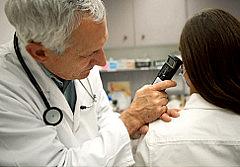The evolutionary and cross-cutting road to 'gold standard' primary care

The quality of primary health care is suffering on many different levels. For example, research shows that one-fifth of primary care patients are not informed about their abnormal test results. The Centers for Medicare and Medicaid (CMS) created the Medicare Medical Home Demonstration in 2007 as part of their innovation initiative under the Centers for Medicare and Medicaid Innovation (CMMI), and later in 2011 began testing their nationwide Patient-Centered Medical Home Model (PCMH) demonstration in their Multi-payer Advanced Primary Care Practice Demonstration and the Federally Qualified Health Centers Advanced Primary Care Practice Demonstration as a step toward quality improvement and shared medical decision making in primary care. A PCMH is defined as a patient-focused “team-based model of care" that seeks to deliver primary care that is comprehensive, coordinated, accessible, safe, and quality-focused. The overarching goals of PCMHs are to establish financial savings, improve primary care quality for Medicare and Medicaid beneficiaries, and address the growing need and demand for primary care services.
Health care quality is addressed and measured within several areas of primary care, such as medical home models, medical outcomes, "Meaningful Use" of electronic medical records (EHRs), and medical errors. Each of these areas have important implications within the scope of public health policy, of which if not addressed could drastically and negatively affect the overall quality of health for millions of Americans across all ages, socioeconomic statuses, genders, and ethnicities. When properly developed, quality measures can be applied and used across various sectors, models, and processes. For example, health care quality can be monitored and measured using high quality EHRs. "Meaningful Use" suggests that providers demonstrate how their EHR data are used to measure the quality and quantity of health care provided. In general, EHRs are useful in that they provide to clinicians the ability to more efficiently manage their patient populations’ health and prescriptions.
Not all providers, however, have the ability to participate in data sharing through EHRs. For example, behavioral health providers lag in data sharing as a result of lack of implementation of EHR in behavioral health settings, and behavioral health providers are also ineligible to obtain federal Meaningful Use funding that would give providers the ability to implement EHRs. To address this issue, a bill was recently introduced and proposed to assist behavioral health providers in becoming eligible for Meaningful Use funding.
Medical errors are not uncommon, and can affect primary care providers on various levels that include, but are not limited to, fatal drug and/or treatment prescription errors, overutilization, and underutilization. A very recent study conducted by patient safety experts at Johns Hopkins University suggests that medical errors are the third-leading cause of death in the U.S., further augmenting medical errors as new phenomenon of concern in public health policy and health care quality. Medical errors are unique from other public health issues in that they are ubiquitous and inexclusive to any particular contextual feature such as socioeconomic status, race/ethnicity, or geographic area.
With medical error comes the concept of medical liability, and the sheer definition of liability is analogous to legal and fiduciary responsibility. Medical liability lives through various forms, which include hospital, corporate, insurer, and managed care liability, and also through the concept of vicarious liability, where an entity accepts responsibility for a second entity based on the relationship between the two entities. Medical errors can be monitored, measured, and thus controlled by using high quality EHRs.
Medical outcomes include but are not limited to a patient’s symptoms, death, mental health, laboratory and diagnostic test results, and physical ability, all of which should be documented in EHRs for Meaningful Use. As such, medical outcomes are heavily considered in health care quality, clinical performance, and public health policy. Outcomes measures, however, can be difficult to assess and measure for health care quality, and to address this limitation, risk adjustments are needed against such measures in order to properly adjudicate negative outcomes.
As the health care reform sweeps across the nation, meaningful use, outcomes measures, EHRs, medical errors, and medical liability policies must individually and incrementally evolve to positively effect primary care practice settings. Such evolution, perhaps in the form of patient-focused and integrated programs like the PCMH, and Meaningful use of EHR data, may help to achieve our nations’ and states’ overarching goal and commitment to better health care outcomes and quality at all levels and across all medical specialties and subspecialties. Amanda Cassidy, Principal of Meitheal Health Policy, quotes in a 2010 Health Affairs health policy brief on PCMHs, “Although it is hoped that medical homes will improve health care by improving quality and reducing costs, the most immediate impact will be on primary care physicians and the patients they treat."
[Photo via Flickr.]

